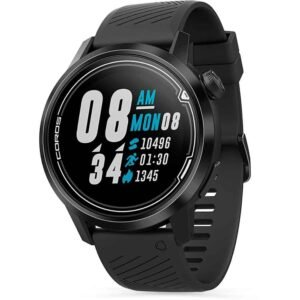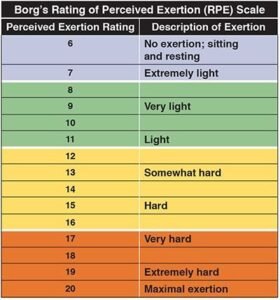
by Coach Adolfo Salgueiro | Jul 5, 2022 | Coaching, Guest Perspective, Opinion, Reflection
By Coach Nick Bonnedahl
The following is a post I recently read in LinkedIn, from the pen of Coach Nick Bonnedahl. It is short, to the point, and it touches on an issue that affects so many runners. It mirrors the way I think about coaching certain athletes, but Coach Bonnedahl, beat me to it and wrote it first.

Blog post reposted by persmission of Coach Nick Bonnedahl
What he states in the post affects so many runners just looking for a quick solution to their athletic problems. It reflects the reality of those who complain the coach is not doing his job because they are not progressing. It echoes the mindset of those who can’t reach their goals, so it must be somebody else’s fault.
With the author’s permission, I am reproducing his post here.
I do not want to coach you if…
-
You are looking for a quick-fix.
-
You like to cut corners and look for a magical pill.
-
You are unprepared to put down some work and ready to go for it.
-
You are not ready to invest in yourself emotionally.
-
You are not doing it for yourself but for someone else.
-
You come with excuses, not turning up.
-
You blame others or events instead of the real reason (YOU).
-
You are not honest with yourself.
But, if you are someone that wants to get the result and work for it, ready to change habits and routines, prepared to invest in yourself to feel better, younger, and happier. If you want to get into/back to running, want to lose some weight, getting motivated, inspired, having accountability, getting coached in a fun way, physically and mentally for long-term results and changes, drop me a message to see if you are a fit.
Nick Bonnedahl is a qualified running coach, ultra-running coach, personal trainer and weight loss specialist based in Thailand.

by Coach Adolfo Salgueiro | Jun 28, 2022 | Article, List, Reflection
By Coach Adolfo Salgueiro
There are countless valid reasons why we engage in running. Health, weight loss, social interaction, doctor’s orders, keeping stress at bay, we are dopamine junkies, or fill in the blank. And, unless you have an underlying physical condition or health issue, most people can complete a 5K or even a 10K race with no major problem. More adventurous runners can get to the half marathon or even marathon club. But if you want to become more than a check-it-off-the-bucket-list runner, if you want to develop into a lifelong athlete, if you want to constantly assess your limits; your running must include one unavoidable characteristic: It’s gotta be fun!
You would be surprised at how many runners focus so much on results, times, Instagram likes and stats that never realized they could also be having fun.
Explaining why it should be fun is a waste of space. It is so obvious: if it stops being fun, then you will quit. So, I will use my space in this post to list eight basic tips you can apply to make sure you won’t get bored or burnt out in the long run (pun totally intended).

There are no podiums during training sessions. Don’t become that runner (Photo Pexels)
1 – Find a running partner or group: Even though many people run because they want to be alone and take a break from the world, someone to run with can make a world of difference in your athletic life. Being a member of a team may not work for everybody but running buddies will change your life.
2 – There are no podiums during training sessions: We all know that one person who runs all out in each single training session. The one person who will accelerate and refuses to let you pass. Well, that person is on its way to injury, burnout or both. Don’t become that person.
3 – Let the GPS watch do what it was designed to do: Always remember the GPS watch is an indicator of your performance, not the director of your training. It is the GPS watch that serves you, not the other way around. Same principle applies to Instagram, Strava and all other social media platforms.
4 – Learn about the sport: You don’t have to become an erudite on the subject, but you should know the basic elements of running physiology, science and mechanics so you can monitor yourself as you progress and prevent injuries.
5 – Register for a race: Maintaining a race in your schedule is the biggest motivation to keeping you focused on your training. If you know you must run X distance on X day and you paid X Dollars for it, then most likely you’ll plan ahead and make it happen.

Yoga is one of many options to cross train and get better at running (Photo Pexels)
6 – Cross train: As much as we love running and it is our primary sports activity, you won’t last long if all you do on behalf of your running is run. Strength training, yoga, biking, swimming or walking are just a handful of alternatives that may complement your overall program to make you a better runner.
7 – Vary the elements in your route: Switch your running course, run somewhere else, change your daily distance, vary your speed, switch the surface in which you run, the time of the day, get rid of those old, beat-up shoes. This will help you keep it fresh and exciting.
8 – Recover properly: Make sure your body has recovered from your previous workout before you take it for another hard running session. Rest and recovery are as important to your running as running itself. Recovery will keep you fresh, injury free and thus, looking forward to your next run.
Peter Magill sums it up like this in in his book Build Your Running Body: “In the long run, it’s the combination of fun and results that keep your motivation from waning. When you are accomplishing your goal and having a blast, too, chances are that you’ll keep going.”

by Coach Adolfo Salgueiro | Jun 14, 2022 | Article, Reflection, Science
By Coach Adolfo Salgueiro
As athletes, we have become so accustomed to technology that is has become an intrinsic part of our daily activity. Our GPS watches capture more data about more metrics than we even know what to do with. Even worse, we feel the need to share every single mile, every single plank and every single cross training session with the world, via our social media channels.

Your GPS Watch can measure many parameters, but only you can measure your effort.
As great as it is to have all our metrics a screen-tap away, the need to impress running friends and strangers with our daily achievements could be in detriment of your progress as runners. We know that slow runs are not sexy, they don’t get as many likes. We understand that running 11-minutes miles when you are a well-known Sub-4 marathoner is not what your brand is all about. But, when 80% of your training is supposed to be done at an easy pace, you either make peace with it or stop posting your easy runs. But I digress.
The time has come for us runners to understand that pace and effort are two different parameters. The primary measuring boundary is not how fast you are running, but how hard your body is working at any given time. The latter measurement is called the Perceived Rate of Exertion (PRE). It is also known as Rate of Perceived Effort (RPE).
According to the CDC, Perceived Exertion is how hard you feel like your body is working. It is based on the physical sensations a person experiences during physical activity, including increased heart rate, increased respiration or breathing rate, increased sweating, and muscle fatigue.
PRE can fluctuate dramatically depending on the athlete and the circumstances of any particular run. A 50% effort after a restful, full night of sleep, on a flat surface, at sea level during a cool, dry spring day, will have you running faster than if you ran a hilly course, at noon, in the middle of the summer, at 90% humidity, right after a big fight with your spouse.
There are a handful of scales to measure your PRE, and regardless of the one you prefer, they are all subjective and they end up evaluating the same thing, just using a different label. The most prominent are the Borg Rating of Perceived Exertion Scale and the RPE Scale.

Click on the image to expand
The Borg scale was developed by Swedish researcher Gunnar Borg, as a tool for measuring an individual\’s effort and exertion, breathlessness and fatigue during physical work. Its scale goes from 6 through 20 and it is set to roughly correlate heart rate. But, as revolutionary as it was when first proposed, that 6-20 range results very awkward to visualize. Plus, not everyone’s heart rate rests at 60 nor it maxes out at 200. Even experienced athletes have a challenging time figuring out where they are from 6-20 at any given moment when 6 is sitting/resting while 20 is maximal exertion. See the accompanying chart.
I personally prefer and recommend to my trained runners, an RPE Scale that goes from 1 to 10. This is nothing but a modification of Borg, but much easier to visualize both in theory and in practice. A Training at 5/10 RPE is at 50% of maximum effort instead of a 12/20 PRE. When you need to do a hill repeat at 7/10 RPE it is easy to figure out where 70% of maximum effort is, rather than a 16/20. See accompanying graphic.

Click on the image to expand
Because the cardinal sin of running is going too hard on easy days, the key to these scales is to figure out where your easy pace fits in. When your coach asks you to “run easy”, understand that you are asked to run at a 4-5/10 effort (40 to 50% of maximum effort), or whatever other parameter your coach has set up for that day. This is the sweet spot. It will feel like walking if you are not used to easy running but, with time, it will serve you well. Guaranteed.
As cliché as it sounds, always remember the GPS watch is an indicator of your performance, not the director of your training. It is the GPS watch that serves you, not the other way around. Stick to your plan and don’t get exerted more than prescribed. It is the key to maintaining yourself fresh, rested, injury-free and ready for hard workouts.
Have faith in the process. In a Runner’s World article from October 2021, Grete Waitz, former marathon world-record holder, Olympic medalist and nine-time winner of the New York City Marathon, was quoted stating: “Hurry slowly”. Believe me, she knew what she was talking about.

by Coach Adolfo Salgueiro | May 31, 2022 | Article, List, Reflection, Science
By Coach Adolfo Salgueiro
Since the majority of my readers and trainees are in the Northern Hemisphere and the weather is warming up rapidly despite being three weeks away from the Summer Solstice, the time has come to remind all athletes that running during the hottest times of the year requires purposeful and intentional adjustments. These modifications are not optional. If you don’t alter your habits, you will not only be unable to maintain or increase your fitness, but you could get seriously hurt.
Heat related injuries won’t break your bones, but they could have lasting effects on your body, and thus, on the future of running.
So, here are 5 tips to adjust to summer running.
1 – Understand what is happening – There are two basic things that happen when you run in a hot and/or humid environment. They just are, so there is no use in fighting them.
1A – The first one is basic physics: Humid air is denser than dry air, so it takes more effort to displace a heavier mass of air, thus enhancing the effort it takes to run at the same speed.
1B – The second one is basic biology: The human body cools off by sweating and the blood contains about 92% water. The more you sweat without replenishing fluids, the more water gets sucked out of your bloodstream and the ticker blood becomes, making it more difficult to circulate. That alone, spells deep trouble.

If you can’t adjust the time of your tun, you may end up on the dreaded treadmill (Julia Larson, Pexels)
2 – Adjust the time of your running – If you live in places like Florida, Texas or similar, your two options are adjusting to run in the heat/humidity or not running at all. If you want to continue running, you must do it at the coolest time possible, when it is gentler to the body. Before sunrise or after sunset are the basic choices. Wake up earlier or wait until later. If you can’t then the dreaded treadmill seems like your option, but that comes with its own set of particularities that you will have to deal with.
A good hack is to keep your running shirt and hat in the freezer and put them on right before you hit the road. This will cool off your core and provide you with a few comfortable initial miles before the inevitable sets in.
3 – Slow your race – There is a reason most mainstream races take place in the fall or the spring. Who wants their goal race in the thick of the scorching summer? So, since summer is usually the time to get ready for the upcoming season, it is the perfect time to take care of the feared strength training and to build up your aerobic engine, which is done by running slower than usual. Your fall and spring PRs are built during the summer. Take advantage of it. Don’t worry about what the fast people in your running group may say or what your Instagram followers may think.

Hydration during the summer months is key, but overhydration can be a life threatening condition (Ketut Subiyanto, Pexels)
4 – Careful about overhydration: Hydration is key during the summer, but hydration is not only what you consume as you run. Hydration should be a 24/7 habit that will put you as close to fully hydrated when you start your GPS watch. Your body is designed to lose fluids and run without replenishing every single drop of water you lose. Don’t fall into the temptation of overindulging on water or sports drinks or you could experience hyponatremia, a condition in which the sodium levels are so diluted that it could cause seizures, coma and even death. For more on hyponatremia, I invite you to read what the Cleveland Clinic website has to say about this serious condition.
5 – Beware of the signs – Running during the summer has challenges that go beyond having to run earlier, later or slower. Heat exhaustion and heat stroke are two of the most serious perils from running in inhospitable climates. It is important to know and recognize the symptoms of each one, so you can adjust properly and avoid a mishap that with luck, it will only keep you out for a few weeks, without it, it could kill you. I wrote an earlier post on heat exhaustion vs. heat stroke. I invite you to revisit it by clicking here.
Running in the heat and humidity is no joke. Please be careful out there. Never lose sight that you need to live to run another day. The line between toughness and doing something stupid is very thin and if you cross it, you can get seriously hurt.
There are no medals or podiums during training, so, be smart out there and remember you are only getting ready for next season.

by Coach Adolfo Salgueiro | May 17, 2022 | Article, List, Reflection
By Coach Adolfo Salgueiro
A good friend of mine shared a post in LinkedIn, last week, where 10 tips for CEO success were listed. The further I read, the more I felt this advice could perfectly translate into our running lives. After all, everybody should the CEO of their own running.

Obstacles are inevitable whether in business or in running. You better be prepared to face them (Photo: Ann-H, Pexels)
It is important to note that my friend specified he could not find the source of these tips, so neither him nor I are claiming ownership of them.
Below, I am duplicating the tips for CEOs as I got them (though translated from Spanish) and then sharing how they apply to taking charge of your running life. Let’s get started.
1 – Focus on the important issues – There are way too many diversions fighting for your attention. Too many goals, too many races, too many social media platforms competing for your likes, etc. If you are to take charge of your running life, you need to pick your direction and your goals, so you know what you are working towards. Setting up PRs in all the distances, every race, every season, is unfeasible. So, choose where you’re going and start focusing on it, now!
2 – Make quick decisions and apply them as soon as possible – Just as in running a company, there are multiple options to choose from, but you must stop procrastinating and pick the one you’ll pursue. You can’t wait for the stars to align before you define if you are changing your season goal to a marathon when you’ve been training for a 5K PR.
3 – Use few rules, as too many rules prevent flexibility, change and innovation – A training plan must be dynamic and everchanging. Don’t overthink every single aspect of your training to the point that you’d rather get injured than adjust. Focus on the main parameters, not on the minutiae. Be openminded enough to realize when your plan needs adjustment.
4 – Learn to say No – When you decide to go for a running goal, you are to be 100% focused. So, to continue your progress you may have to skip certain parties, happy hours or comfort foods for a while. Nobody expects you to miss your best friend’s wedding because you have a long run, but you should not get drunk out of your mind at the party if your goal marathon is in two weeks. Focus now, party later!
5 – Keep a goal in mind, even if it is difficult to achieve. Have a long-term vision –Running is a journey, not a quick weekend road trip. Your goal may take more than a race or a season to achieve. Some runners have worked 10+ years towards their BQ. Accept that there will be bumps along the road, learn from them, and keep running towards that goal.

Your goal may take more than one race and more than one season, but if you keep focused, you may achieve it (Photo: Iconcom, Pexels)
6 – You should be willing to spend many hours at work – Hard work require long hours. It is that simple. There are no shortcuts, simply hard work.
7 – Study, learn, update your knowledge – You won’t be able to improve if you keep doing the same thing over and over. There’s new science being published every month, there are books, articles, podcasts and magazines to guide you through your journey. And, if you don’t feel like doing this part of the job, hire a coach who will do it for you.
8 – Be courageous when facing adversity because you will find obstacles – It won’t be easy. Face it and accept it. It will require sweat, pain, funds and sacrifice. Sometimes, even injury. Be ready to work through it because these obstacles are coming fast at you, so you better be ready to confront them.
9 – Put passion into your work – You can’t run a marathon or train year-round just to please someone else. You must enjoy it and be willing to invest the time and sweat this requires. If you are not passionate about it, do yourself a favor and find another hobby.
10 – Develop communicational skills – Even though ours is not a team sport, running in a group or a team can ad so much to your running life. Sharing your journey with friends, or through social media groups specifically created for this purpose, can boost your confidence, knowledge and experience. Don’t go solo in your running life, especially in the 21st Century.
Take charge of your running in the same fashion as you would take charge of your own business. If you visualize it, focus and work hard towards your goals, there is a good chance you will achieve them. Nobody will do it on your behalf.
Any thoughts?















